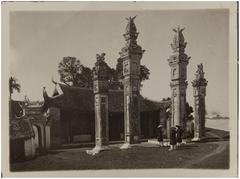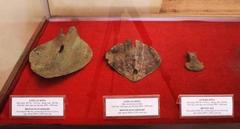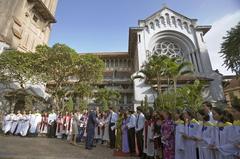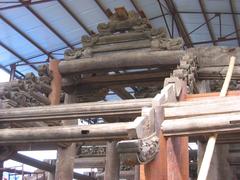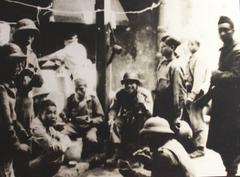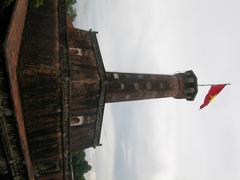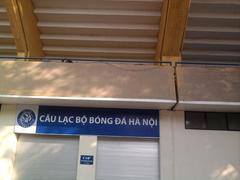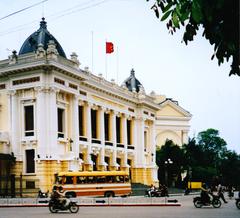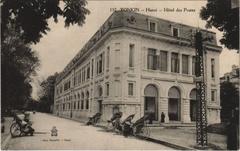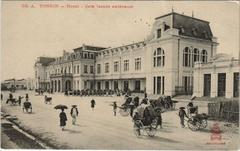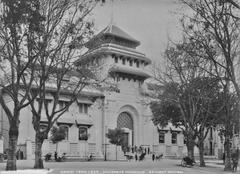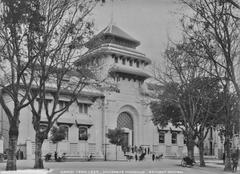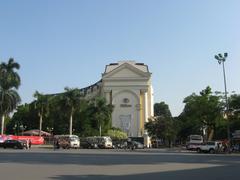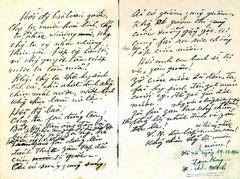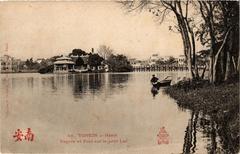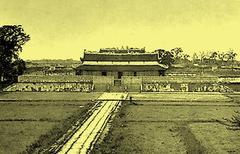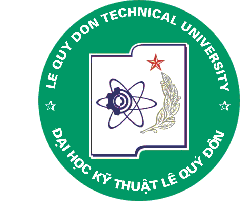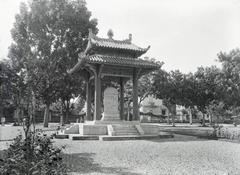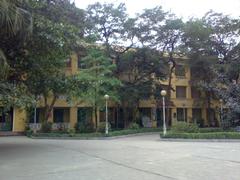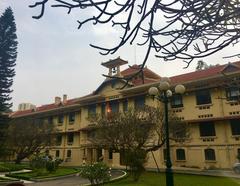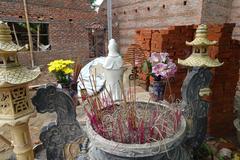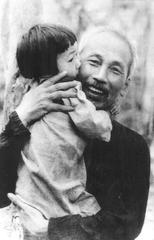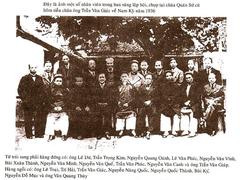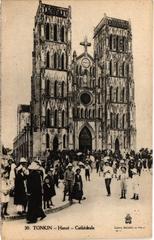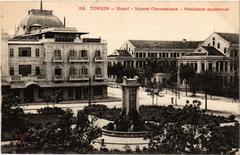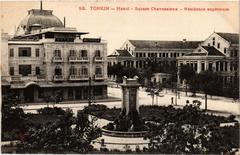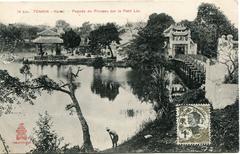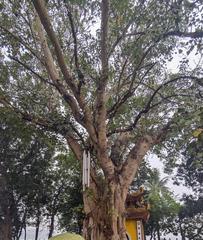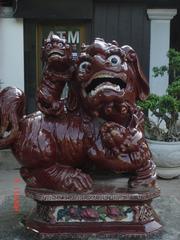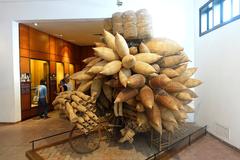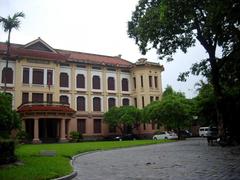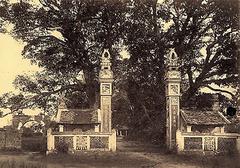Hai Bà Trưng Temple Visiting Hours, Tickets, and Historical Significance in Hanoi, Vietnam
Date: 14/06/2025
Introduction
Nestled in the verdant outskirts of Hanoi, the Hai Bà Trưng Temple in Mê Linh is a monumental testament to Vietnam’s enduring history and cultural identity. Dedicated to the legendary Trưng Sisters—Trưng Trắc and Trưng Nhị—who led the first major uprising against Han Chinese rule in 40 AD, this temple stands at the very birthplace of the heroines. Today, it serves as both a sacred site and a vibrant cultural hub, where centuries-old traditions are preserved and celebrated. Visitors to the temple can not only admire its traditional Vietnamese architecture and historical artefacts but also experience the annual Hai Bà Trưng Temple Festival, which animates the grounds with processions, rituals, and community festivities.
This comprehensive guide covers everything you need to plan a meaningful visit: history, cultural significance, visiting hours, ticket policies, accessibility, travel tips, festival highlights, and nearby attractions. Whether you are a history enthusiast, a cultural traveler, or simply curious about Vietnamese heritage, the Hai Bà Trưng Temple offers a profound window into the nation’s resilient spirit. For the latest information, consult official resources such as the Hanoi Tourism Board, Mê Linh District Portal, and other credible travel platforms (TopGoTourist; vanhoatamlinh.com).
Table of Contents
- Introduction
- The Origins and Historical Context
- The Trưng Sisters’ Uprising and Legacy
- Architectural Highlights and Symbolic Features
- Visiting Hai Bà Trưng Temple: Hours, Tickets, and Travel Tips
- Festivals and Rituals
- Artefacts and Conservation
- Community and Contemporary Relevance
- Nearby Attractions
- Visitor FAQs
- Summary and Recommendations
- References
The Origins and Historical Context
The Hai Bà Trưng Temple stands on the historic land of Ha Lôi village, Mê Linh, revered as the birthplace of the Trưng Sisters. Born into a prominent Lạc family, Trưng Trắc and Trưng Nhị grew up in an era of Han Chinese dominance, yet retained strong Vietnamese cultural roots. Their upbringing and leadership abilities would lay the foundation for their unprecedented revolt (TopGoTourist; JustHistoryPosts).
The Trưng Sisters’ Uprising and Legacy
In 40 AD, propelled by the execution of Trưng Trắc’s husband, Thi Sách, the sisters galvanized local resistance and led thousands to capture Luy Lâu, establishing a brief period of independence until 43 AD. Although the rebellion was ultimately quashed, the Trưng Sisters’ story became a foundational legend of Vietnamese resistance and female leadership. Over 100 temples across Vietnam honor their legacy, with the Mê Linh temple regarded as the most authentic (TopGoTourist; Wikipedia).
Architectural Highlights and Symbolic Features
The temple complex is a showcase of traditional Vietnamese architecture and symbolism:
- Tam Quan (Three-Entrance Gate): A grand triple-arched entrance, intricately carved and adorned with calligraphy, marks the threshold to sacred space (Mê Linh Portal).
- Central Courtyard: Flanked by ancient muỗm trees and stone elephants symbolizing the sisters’ legendary war elephants and the 18 Hùng Kings.
- Main Sanctuary: Houses principal altars and life-sized statues of the Trưng Sisters, dressed in regal martial attire.
- Ancillary Structures: Includes bell and drum towers, guest houses, memorial steles, and shrines to family members and generals.
- Oath Stone (Hòn Đá Thề): The legendary spot where the sisters swore to lead the revolt, central to annual rituals.
- Decorative Motifs: Curved roofs with dragon finials, intricate woodwork, and a dominant palette of red and gold convey prosperity and reverence (Nguoi Hanoi).
Visiting Hai Bà Trưng Temple: Hours, Tickets, and Travel Tips
- Visiting Hours: Open daily from 7:00 AM to 5:00 PM (sometimes extended during festivals).
- Ticket Prices: Regular admission is free; small fees may apply during special festival events, and donations are welcome (Nguoi Hanoi).
- Getting There: About 25–30 km northwest of central Hanoi; accessible by taxi, motorbike, private car, or public bus. Guided tours are available through Hanoi operators.
- Accessibility: Main areas are paved and wheelchair-accessible; some sections have stairs. Facilities include accessible restrooms and ramps.
- Visitor Tips:
- Dress modestly (covering shoulders and knees).
- Remove shoes before entering sanctuaries.
- Visit early or late in the day for a quieter experience.
- Festival days offer vibrant cultural activities but can be crowded.
Festivals and Rituals
The annual Hai Bà Trưng Temple Festival is a highlight, held from the 4th to the 10th day of the first lunar month (main day on the 6th; in 2025, Feb 3–7) (melinh.hanoi.gov.vn).
Festival Features
- Official Ceremonies: Incense offerings, commemorative gatherings, and state rituals.
- Processions: Palanquins carrying effigies of the sisters, accompanied by hundreds in traditional dress.
- Giao Kiệu Ritual: Symbolic palanquin exchange, unique to the festival.
- Performances: Historical reenactments (“Âm vang Mê Linh”), folk music, dance, and art exhibitions.
- Folk Games and Sports: Tug-of-war, wrestling, chess, volleyball, and football.
- Culinary Stalls: Local food specialties highlight Mê Linh’s culinary culture.
- Community Participation: Deep involvement of villagers in rituals and festivities (vanhoatamlinh.com; vinwonders.com).
Additional Commemorative Dates
- 8th day of the 3rd lunar month: Trưng Sisters’ passing.
- 1st day of the 8th lunar month: Sisters’ birthday.
- 10th day of the 10th lunar month: Memorial for Thi Sách.
Artefacts and Conservation
The temple houses an impressive collection:
- Sắc Phong (Royal Decrees): 23 royal edicts honoring the sisters.
- Ceremonial Paraphernalia: Palanquins, mother-of-pearl inlaid boards, ceremonial screens.
- Statues and Altars: Detailed statues of the sisters, their family, and generals.
- Memorial Stele and Letters: Including correspondence from revolutionary leaders.
- Restoration: Declared a Special National Monument in 2013, with ongoing efforts to preserve architectural and artefactual integrity (Mê Linh Portal; Nguoi Hanoi).
Community and Contemporary Relevance
The temple remains a vibrant center for local spiritual and social life. Its annual festival and daily rituals foster community pride and continuity. The Trưng Sisters are celebrated nationwide as symbols of resistance and women’s empowerment, with their legacy embedded in education, arts, and public memory (Wikipedia; World History Edu).
Nearby Attractions
- Temple of Literature: Hanoi’s ancient center of Confucian scholarship.
- Hoan Kiem Lake: Iconic urban lake in central Hanoi.
- Đền Và (Và Temple): Another historical site in the Mê Linh district.
- Mê Linh Plateau: Offers scenic landscapes for hiking and reflection.
Guided tours often include multiple sites, enriching your cultural itinerary.
Visitor FAQs
Q1: What are the temple’s opening hours?
A: Daily from 7:00 AM to 5:00 PM (may be extended during festivals).
Q2: Is there an entrance fee?
A: Regular admission is free; fees may apply for festival events.
Q3: How can I get there from Hanoi?
A: By taxi, motorbike, private car, or public bus; about 25–30 km from the city center.
Q4: Is the temple accessible for disabled visitors?
A: Most areas are accessible, with ramps and paved paths; some areas have stairs.
Q5: What should I wear?
A: Modest attire covering shoulders and knees is recommended.
Q6: Are children welcome?
A: Yes, but supervise them closely, especially during busy festivals.
Summary and Recommendations
The Hai Bà Trưng Temple in Mê Linh is not just a historical monument but a living emblem of Vietnam’s cultural resilience and female leadership. With its well-preserved architecture, sacred relics, and vibrant community traditions—especially during the Lunar New Year festival—the temple offers an enriching experience to all visitors. Practical information such as free daily entry, guided tours, and accessible facilities make it suitable for a wide range of travelers. By visiting, you engage with a foundational chapter of Vietnamese history and participate in the living heritage that keeps the Trưng Sisters’ spirit alive.
For updates, guided tour options, and more on Hanoi’s historical sites, use the Audiala app and follow official resources (melinh.hanoi.gov.vn; vinwonders.com).
References
- TopGoTourist: History of the Hai Bà Trưng Temple Festival
- Mê Linh District Portal: Temple Information
- vanhoatamlinh.com: Hai Bà Trưng Temple in Mê Linh
- melinh.hanoi.gov.vn: Festival Details 2025
- Nguoi Hanoi: Architectural Features
- World History Edu: Trưng Sisters’ Legacy
- VTC News: Cultural Travel
- Vinwonders: Travel Guide
- Hanoi Tourism Board
- Wikipedia: Trưng Sisters


